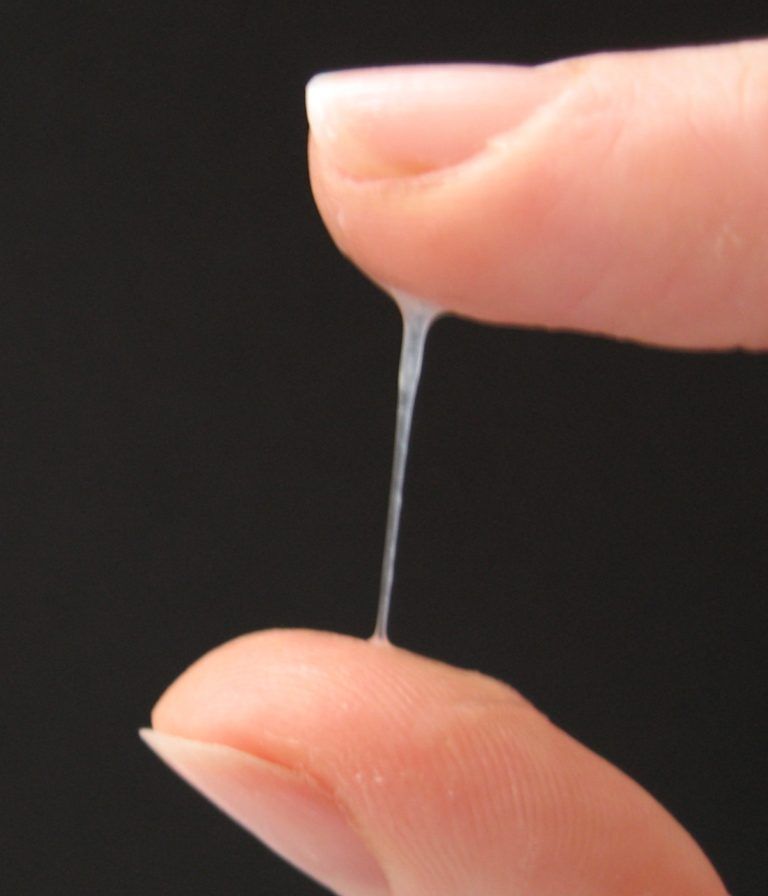Decoding Cervical Mucus
Updated: Nov 18, 2020
Written by: Dr. Sarah Rex, Medicine & Surgery
Cervical mucus is a watery or gel-like discharge from the vagina. The glands produce it in the cervix in response to different hormonal stimuli.
The hormonal variations throughout the menstrual cycle change the color, consistency, and amount of cervical mucus.
The cervical mucus keeps the vagina lubricated, nourishes it, and prevents infections. It also provides a safe passage to the sperm when conception is desired.
There are different ways to check the appearance of cervical mucus. These include:

Manual Method
One or two clean fingers are inserted in the vagina near to the cervix and brought out. The color and texture of the mucus are observed accordingly. It can be white, yellow, cloudy, or clear. The composition can be watery, sticky, or gel-like.
Toilet Paper Method
Use a clean toilet paper to wipe the opening of the vagina before using the washroom.Note the color and consistency of the cervical mucus on the toilet paper. Changes in the cervical mucus can also be felt on underwear, but it’s a crude and unreliable method.
Types of Cervical Mucus
Cervical mucus is of different types depending upon the appearance of the slime on the toilet paper or finger, and sensation produced by it at the vulva.
Type 1 - Lowest Fertility
In this type, nothing is seen on the toilet paper, and dry or rough sensations are felt on the vulva.
Type 2 - Low fertility
Only a slight amount of vaginal discharge is seen, or sometimes even nothing, but damp sensations are felt at the vulva.
Type 3 - Intermediate Fertility
The cervical mucus is thick, whitish, whitish-yellow, non-stretchy, and sticky. The sensations felt at the vulva are moist.
Type 4 - High Fertility
The mucus is transparent, like raw egg white, stretchy, and watery. Wet and slippery sensations are felt at the vulva.
Changes In Cervical Mucus
The following changes are noticed in the cervical mucus during different stages of the menstrual cycle.
During the Menstrual Period (days 1 to 5)
Blood is discharged from the vagina. No mucus is seen during this period.
After Menstruation(days 5 to 10)
Immediately after menstruation, there is no vaginal discharge, but sticky glue-like fluid may follow afterward.

Before Ovulation (days 10 to 14)
The amount of estrogen increases before ovulation, which leads to an increase in the quantity of cervical mucus produced. It is thick, glue-like, white, yellow, or cloudy.
During Ovulation (day 14)
The mucus becomes thin, watery, and clear like raw egg white. It provides a favorable environment for the sperm to enter the reproductive tract and fertilize the ovum. It indicates maximum fertility.
After Ovulation(days 15 to 28)
Progesterone is produced during this time, which dries up the cervical mucus. The mucus becomes thick and cloudy initially, and as the end of the menstrual cycle approaches, it even diminishes.
After Conception
The mucus becomes thick, gel-like, and clear again. Some women also experience implantation bleeding or spotting. It can be used as an indicator of a successful pregnancy.
So, the cervical mucus discharge is a normal physiologic process occurring throughout the menstrual cycle. It can be used as an indicator to predict the time of maximum fertility. For more accuracy, it is used in combination with other methods like basal body temperature, ovulation calendars, and fertility tests.




Leave a comment